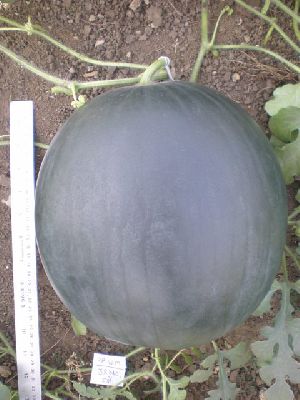
Sugar Baby
Yellow red round slightly flattened fruit Technical Specifications First Harvest: 90 - 110 Days
...more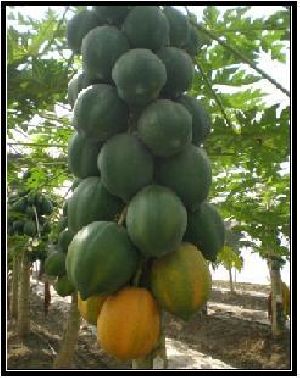
Papaya
The primary use of the papaya is as an edible fruit. It is usually eaten raw, without the skin or seeds. The unripe green fruit of papaya can be eaten cooked usually in curries, salads and stews. It is a small unbranched tree, the single stem growing to 5-10 m tall, with the spirally arranged leaves confined to the top of the trunk; the lower trunk is conspicuously scarred with the leaf scars of where older leaves and fruit were borne. The leaves are large, 50-70 cm diameter, deeply palmately lobed with 7 lobes. The flowers, similar to the flowers of the Frangipani, are produced in the axils of the leaves, maturing into the large 15-45 cm long, 10-30 cm diameter fruit. The fruit is ripe when it feels soft (like a ripe avocado or a bit softer) and its skin has attained an amber to orange hue. Papaya are also know as papoyas in Japan. Papaya is rich in an enzyme called papain (a protease which is useful in tenderizing meat) and other proteins. Its utility is in breaking down the tough meat fibers. Papaya enzyme is also marketed in tablet form to remedy digestive problems. Women in India and Sri Lanka and other parts of the world have long used papaya as a folk remedy for contraception and abortion. Medical research in animals has confirmed the contraceptive and abortifacient capability of papaya, and also found that papaya seeds have contraceptive effects in adult male langur monkeys, possibly in adult male humans as well. Unripe papaya is especially effective, in large amounts or high doses. Papaya is not teratogenic and will not cause miscarriage in small, ripe amounts. Phytochemicals in papaya may suppress the effects of progesterone. The black seeds are edible, and have a sharp, spicy taste. They are sometimes ground up and used as a substitute for black pepper. In some parts of Asia the young leaves of papaya are steamed and eaten like spinach.
...more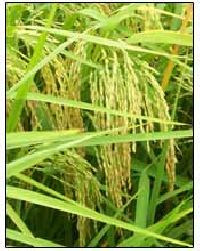
Hybrid Paddy Seeds
MID DURATION VARIETY MEDIUM HEIGHT AND STRONG STEM MORE FILLED GRAINS PER PANICLE AND MORE TILLERS PER PLANT MEDIUM SLENDER AND AROMATIC GRAIN 25 % MORE YIELD OVER THE LOCAL VARIETIES TOLERANT TO BACTERIAL LEAF BLIGHT (BLB). Medium slender grains with Medium scented rice 25% more yield than comparable duration based high yield variety (HYV).
...more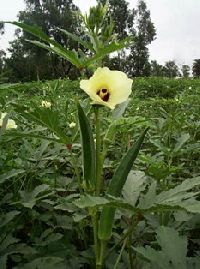
Hybrid Okra Seeds
Okra is also known as Bhindi. Okra, or lady's finger. It was formerly considered a species of Hibiscus, but is now classified in the genus Abelmoschus. It is an annual or perennial herbaceous plant, growing to 2 m tall, straight up with very little phototropism. The leaves are 10-20 cm long and broad, palmately lobed with 5-7 lobes. The flowers are 4-8 cm diameter, with five white to yellow petals, often with a red or purple spot at the base of each petal. The fruit is a capsule, 5-20 cm long, containing numerous seeds.
...more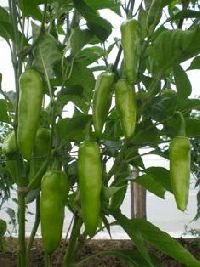
Hybrid Chilli Seeds
Chillies are excellent source of Vitamin, A, B, C and E with minerals like molybdenum, manganese, folate, potassium, thiamin, and copper. Chilli contains seven times more vitamin C than orange. Chillies are good for slimming down as it burns the calorie easily. Chillies stimulate the appetite, help to clear the lungs, and stimulate digestive system.
...more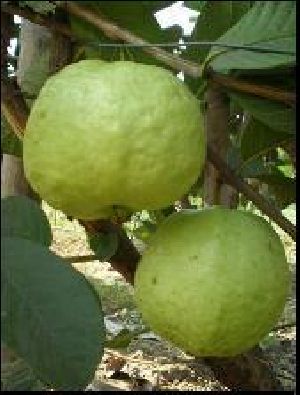
Guava
Guava Psidium guajawa Guava is a tropical fruit that is like the shape of pear, with green rind and pinkish or white flesh and small seeds. Guava fruit, usually 4 to 12 cm long, are round or oval depending on the species. The outer skin may be rough, often with a bitter taste, or soft and sweet. Varying between species, the skin can be any thickness, is usually green before maturity, but becomes yellow, maroon, or green when ripe. Guava fruit generally have a pronounced and typical fragrance. Guava pulp may be sweet or sour, off-white to deep pink, with the seeds in the central pulp of variable number and hardness, again depending on species. Guava has multiple uses, apart from eaten raw with skin and seed, the fruit is also often prepared as a dessert. Guavas are often marketed as "superfruits", being rich in vitamins A and C, It contains vitamin � C, 2 to 5 times more than fresh orange juice. Because of the skins high level of pectin, boiled guava is also extensively used to make candies, preserves, jellies, jams, marmalades (goiabada), and also for juices and aguas frescas. Guava leaves are used in folk medicine as a remedy for diarrhea and, as well as the bark, for their supposed antimicrobial properties and as an astringent. Guava leaves or bark are used in traditional treatments against diabetes
...more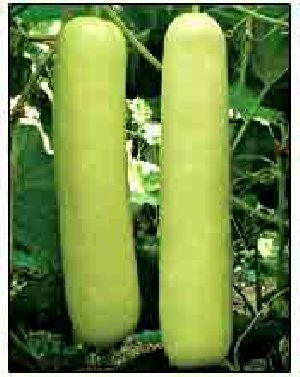
Bottle Gourd
Bottle Gourd: As a vegetable is easily digestible. Because of its digestible properties it is videly served to patients. A decoction made from the leaf is a very good medicine for curing jaundice. Bottle Gourd pulp is good for overcoming constipation, cough , nightblindness and as an antidote against certain poisons . Technical Specifications Sowing Period 1: June - November First Harvest: 60 - 65 Days Seed Quantity Per Acre: 0.8 - 1.5 Kgs Sowing distance between rows/ridges: 180 - c.m. Sowing distance between plants: 90 - c.m. Sowing Depth: 2 - 3 c.m. Physical Features Colour: GREEN Shape: CYLINDRICAL Size: Length : 30 - 35 cms Width : 8 - 9 cms Weight: 1 - 1.25 Kgs
...moreBe first to Rate
Rate ThisOpening Hours